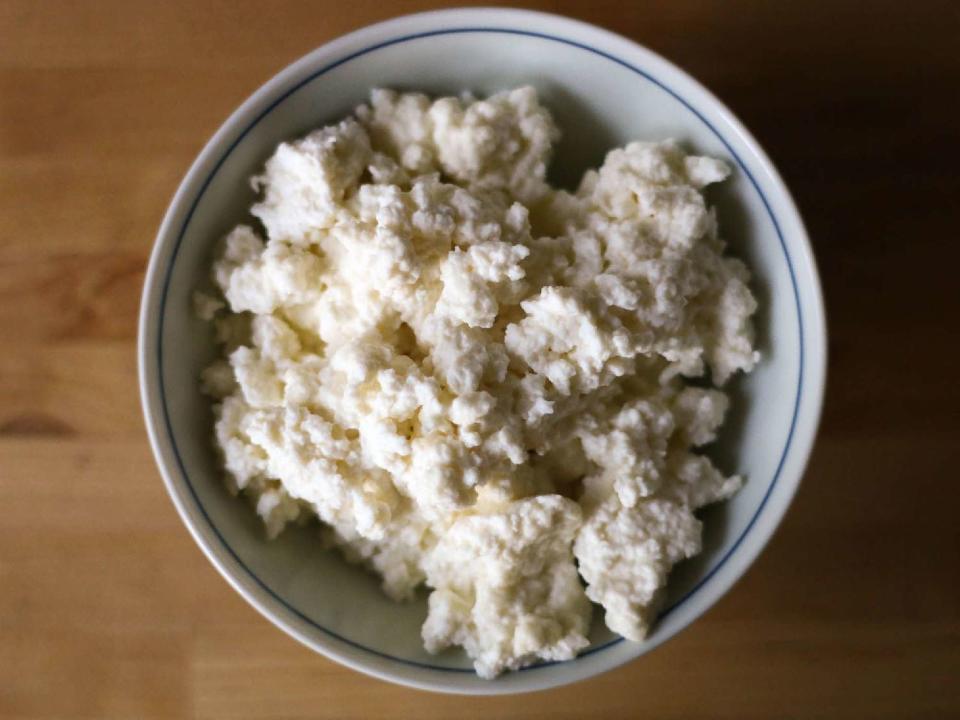Queso Fresco vs. Cotija Cheese: What’s the Difference?
Understanding these two delightfully crumbly cheeses.

If you eat or cook Mexican food often, you’ll come across two cheeses time and time again: queso fresco and cotija. These two are essential to Mexican cuisine and appear to be similar in both their appearance and their uses, so what is the difference, really? Is there one? Would it really make or break the flavor if you were to swap out one crumbly white cheese for another to top those tacos?
What Is Queso Fresco?
Maybe when you hear queso you think of dip (totally fair), but here we’re talking about the cheese variety, not the melted bowl of goodness you serve with chips.
Queso Fresco is a soft, fresh cheese, made from either all cow’s milk or a combination of cow and goat. Its flavor is mild and milky, yet slightly tangy, similar to the Indian paneer, a farmer’s cheese, or even cottage or a very mild goat cheese. The cheese is moist with an elastic quality like other soft cheeses but can still be crumbled like feta.
Related: 17 Cotija Cheese Recipes to Try
What Is Cotija?
Cotija is a hard, crumbly cheese made from cow’s milk, named after the Mexican town of Cotija in the state of Michoacán, where it originated. This cheese is aged for months, making it salty and a bit tangy. It also makes it firmer and drier than non-aged cheeses and friendlier to grating. Cotija is akin to Parmesan in texture, but it may also be compared to Pecorino Romano, ricotta salata, or even firm feta.
Queso Fresco vs. Cotija Differences
In the store, it might be easy to confuse one of these cheeses for the other, their hues of white and proximity to each other giving an air of similarity. But queso fresco and cotija are very different. Here are the 6 major distinctions:
Milk
Cotija is made solely with cow’s milk, but queso fresco might be made with a mixture of cow and goat milk.
Aging
Queso fresco is as the name implies — fresh. At most, it’s aged a few days. Cotija, however, is aged 2-12 months, creating its signature texture and grate-friendly texture.
Related: Our 20+ Best Authentic Mexican Recipes
Texture
Queso is the softer of the two, while cotija gets its dryness from the aging process.
Shelf-Life
A plus of longer aging is that cotija can be kept around much longer, with minimally aged products lasting about a month in the fridge and longer-aged ones up to 3 months.
Queso fresco, the fresh cheese, is meant to be eaten immediately. Homemade queso fresco only lasts three days to 1 week in the fridge, but some store-bought versions may last up to 2 months if kept in an airtight container and refrigerated.
Salt
Cotija is a saltier cheese and queso is mild, with a creamy, milky flavor similar to mozzarella.
Uses for Queso Fresco and Cotija
Queso fresco and cotija are both eaten sliced or crumbled, soften and brown when heated rather than melt, and neither one will overpower the dish they’re used in. These cheeses take a supporting role rather than being the star. But that doesn’t mean there aren’t specific dishes that each one is best for.
Related: Here's What You Need To Make Authentic Mexican Food
Use cotija on elotes (Mexican grilled corn) or as a crumbly topping for tostadas, enchiladas, tacos, migas, salads, chili, soup, or stew.
Use queso fresco inside tamales or as a topping for enchiladas, tacos, and salads. It also shines as a bright garnish for dishes like huevos rancheros and guacamole.
Can One Be Substituted for the Other?
Despite all their differences, you can absolutely substitute one for the other. Both add a welcome creamy element to food, but cotija tends to be more easily found in stores. Keep in mind that cotija will be a bit saltier than queso, so depending on the application of the cheese or your taste, you may want to use less.

